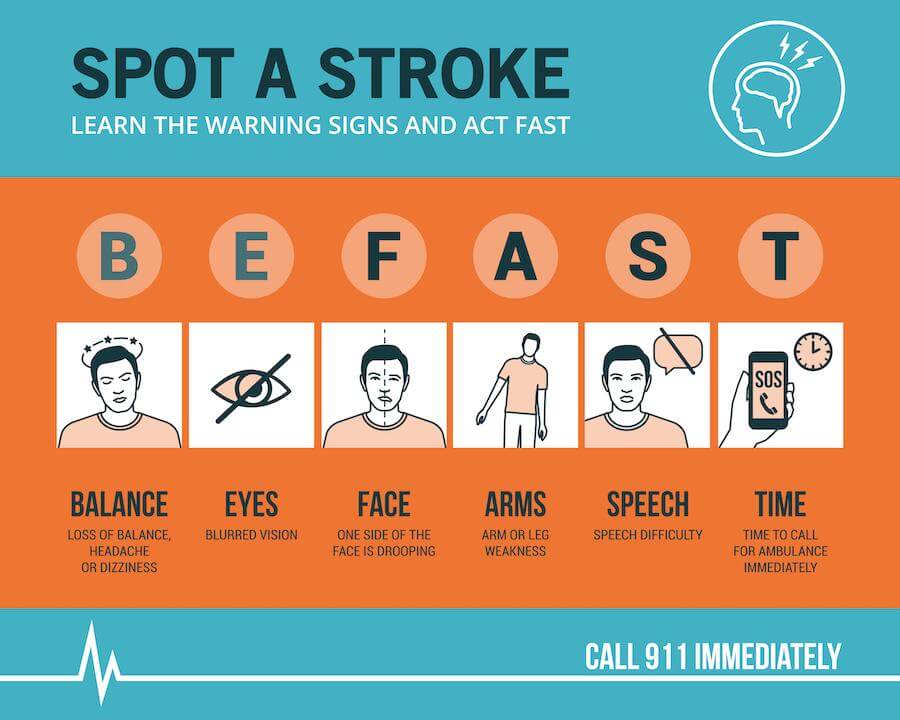Highlights
- A stroke is sometimes called a “brain attack.”
- An ischemic stroke occurs when a blood clot or another particle blocks blood flow to the brain.
- A hemorrhagic stroke occurs when an artery ruptures or leaks blood in the brain.
- Recognizing the signs of stroke and seeking immediate care can reduce your risk of serious health complications.
- You can reduce your risk for stroke by making healthy lifestyle changes and by carefully managing any existing health conditions you might have.
- BidRx helps you to get the lowest price for medications for all your medical conditions.
A stroke is a medical emergency that can result in serious health complications, including death. Seeking immediate care can help to improve your health outcomes. Learn the signs of stroke, how to prevent stroke, and how to access treatment.
What Is a Stroke?
A stroke is sometimes referred to as a “brain attack” or a cerebrovascular accident. A stroke happens when something blocks blood flow to the brain or when a blood vessel bursts in the brain. This prevents the brain from getting vital oxygen and nutrients, which damages or destroys brain cells.
There are different types of strokes. Regardless of the type, a stroke can result in long-term brain damage, disability, or even death.
Ischemic Stroke
Ischemic strokes are the most common type of stroke. An ischemic stroke is caused by blood clots or other particles blocking the blood vessels to the brain. Sometimes these blockages are caused by fatty deposits (plaque) that have built up in the blood vessels.
Hemorrhagic Stroke
Hemorrhagic strokes are less common than ischemic strokes but are also severe. A hemorrhagic stroke occurs when an artery leaks blood or ruptures in the brain. This places pressure on the brain cells and damages them.
Hemorrhagic strokes are sometimes caused by high blood pressure and aneurysms.
Transient Ischemic Attack
A transient ischemic attack (TIA) is sometimes referred to as a mini-stroke. It is not considered a major stroke. However, these strokes often serve as a warning of risk for a future major stroke.
During a TIA, blood flow is typically blocked to the brain for less than five minutes. This is usually caused by a blood clot that reverses on its own. A TIA is still a medical emergency requiring immediate medical attention.
In the beginning stages, you cannot tell whether your symptoms are from a TIA or a major stroke. Recognizing the signs of TIA and treating them appropriately can help to reduce your risk of a major stroke event.
Signs of Stroke

A stroke is a medical emergency that requires immediate attention. This makes it critical to be able to recognize the various signs and symptoms of stroke.
Signs and symptoms can range from mild to severe. The most common symptoms include sudden:
- Numbness or weakness in the face, arm, or leg (typically on one side of the body)
- Confusion, difficulty speaking, or trouble understanding speech
- Vision problems or trouble seeing in one or both eyes
- Dizziness, loss of balance or coordination, or trouble walking
- Severe headache with no known cause
Seek emergency medical attention if you or someone else suddenly experiences these symptoms.
Act F.A.S.T.
Stroke can be more effectively treated when it is recognized and diagnosed within the first three hours of symptoms. Experts encourage everyone to use the acronym F.A.S.T. to quickly respond to a stroke.
If you believe someone is having a stroke, act F.A.S.T.:
- F — Face. Ask the person to smile. Does one side of the face droop?
- A — Arms. Ask the person to raise both arms. Does one arm drift downward?
- S — Speech. Ask the person to repeat a simple phrase. Is the speech slurred or strange?
- T—Time. A timely response is critical. Call 911 right away.
You may also ask if the person is having issues with their balance or vision. Take note of when the symptoms first appeared. Do not take a potential stroke victim to the hospital, and if you are the person affected, do not drive yourself. Instead, call for an ambulance so emergency responders can begin treatment right away. Fast medical attention is the key to a positive outcome.
Stroke Risk Factors
Anyone can have a stroke. However, there are some risk factors that place you at greater risk. Knowing your risk helps you better monitor for and take actions to prevent a stroke.
Risk factors include:
- Age. Your risk of stroke increases with age.
- Family history. Having a family history of stroke is linked to having a greater risk for stroke.
- Personal history of stroke. Having a major stroke or a TIA increases your risk for future stroke.
- High cholesterol. Having high cholesterol places you at risk for plaque buildup in the arteries. This increases your risk for stroke.
- Heart disease. Some heart conditions increase your risk for stroke. Examples include coronary artery disease, heart valve defects, enlarged heart chambers, and heart valve defects.
- Other certain medical conditions. Many common medical conditions can increase your risk for stroke, such as diabetes and sickle cell disease.
- Certain health behaviors. Your lifestyle can increase your risk for having a stroke. For example, not getting enough physical activity or having a diet that is high in saturated fats, trans fats, and cholesterol can lead to health conditions that increase your risk for stroke. Excessive alcohol use can also increase your risk for stroke.
- Tobacco use. Tobacco use is linked to many serious health conditions and places you at a greater risk for stroke.
Stroke Diagnosis

Your doctor will order tests to identify the root cause of your symptoms and to rule out other conditions. They will conduct imaging tests to help determine what type of stroke you have had and where it happened in your brain. It’s important for these tests to be done as soon as possible to inform your treatment.
Your doctor may use the following tests to confirm your diagnosis:
- Computed tomography (CT)
- Magnetic resonance imaging (MRI)
- Other imaging tests to examine blood vessels
- Blood and heart tests, as needed
Stroke Complications
A stroke can result in serious health complications, including long-term disability. Early medical attention can help to reduce your risk of long-term complications, but many people require ongoing care.
Complications of stroke can include:
- Weakness or paralysis on one or both sides of the body
- Trouble with thinking, attention, learning, judgment, or memory
- Trouble with speaking or understanding speech
- Difficulty controlling or expressing emotions
- Trouble with chewing or swallowing
- Bladder or bowel control problems
- Numbness in parts of the body
Having a stroke can result in significant changes to your daily life. This can lead to depression and other emotional challenges. A strong support team can help you to overcome these challenges.
Stroke Treatment
The earlier you receive medical treatment, the better your odds are for a successful outcome. Your treatment will depend on how soon you receive medical attention, the type and severity of the stroke, and your existing health conditions. Treatment may include emergency care, treatment to prevent another stroke, and rehabilitation to treat side effects and complications of stroke.
If you’ve had an ischemic stroke your treatment might include:
- Thrombolytic medication. Thrombolytic drugs break up blood clots. Patients who receive care within three hours of symptoms may be eligible to receive a tissue plasminogen activator (tPA), which is a thrombolytic drug. Patients who receive tPA tend to have better recovery outcomes when compared to patients who did not receive tPA.
- Blood thinners. Your provider may use blood thinners to address blood clots.
- Surgery. You may require surgery to remove the blood clot.
If you’ve had a hemorrhagic stroke, your treatment may include medication, surgery, or other procedures to stop the bleeding and save brain tissue.
Common stroke treatments include:
- Endovascular procedures. These procedures are used to repair a break or a weak spot in a blood vessel.
- Surgery. A metal clip is sometimes put in place to stop blood loss resulting from a ruptured aneurysm.
Stroke Prevention
Maintaining a healthy lifestyle and managing any chronic health conditions can help to reduce your risk of stroke. This is especially important if you’ve already had a stroke, because having one stroke places you at a much higher risk for having another.
Healthy lifestyle factors that help to prevent stroke include:
- Engaging in regular physical activity
- Eating a balanced diet, complete with fresh fruits and vegetables
- Limiting the amount of alcohol you drink
- Quitting smoking or not starting in the first place
- Managing existing health conditions
- Taking all medications as prescribed
Talk to your doctor about lifestyle and medication options if you’re concerned about your risk for stroke.
Get the Best Treatments at the Lowest Price with BidRx
There are many ways you can reduce your risk for stroke. Leading a healthy lifestyle includes carefully managing your existing health conditions. We make it easier to manage your health by offering the best treatments at the lowest prices.
Sign up for BidRx to create a bid for your prescription, then sit back while pharmacies across the United States bid on it. Once you’ve compared prices, you can have your prescription delivered to your door or pick it up locally, depending on the offer you choose.
Find your medications on our medication page and place your bid today.
